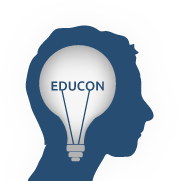Collaborating with New Media Literacies
In the school of the future, teachers plan together to design units and projects that integrate multiple subject areas and technologies. Students work collaboratively and independently using a variety of 21st Century tools to embrace new literacies and enhance communication, motivation, understanding, and accountability. There are national/international standards for new media use and technology integration put out by ISTE, NCTE, and other organizations that can be used as guides. School communities perpetually innovate and use available resources academically, responsibly, and respectfully. Still, we need to constantly grapple with the following questions: How are students using new media? How are teachers modeling how to use these tools appropriately? How are we preparing our digital natives to be digital citizens?
In this session, we hope to facilitate a conversation where we: 1. Define the terms: Media, literacy, new media, new literacies. 2. Discuss Henry Jenkins' new media literacy skills and what it means to be part of a participatory culture: Play, performance, simulation, appropriation, multitasking, distributed cognition, collective intelligence, judgment, transmedia navigation, networking, negotiation, visualization. 3. Examine specific examples of multidisciplinary academic projects that reinforce these skills.
Conversational Practice
Discussion! As part of our Participatory Culture, we need to actively create ways for members to participate. For those present, we can engage in direct conversation. Additionally, the conversation can continue online via Twitter, a shared Google Doc, and a Posterous space dedicated to collecting archival artifacts.
 EduCon 2024
EduCon 2024
No comments have been posted yet.
Log in to post a comment.